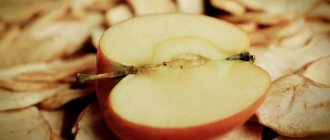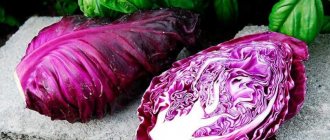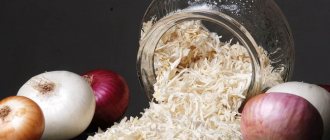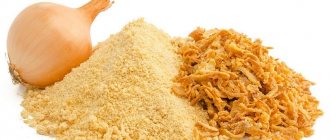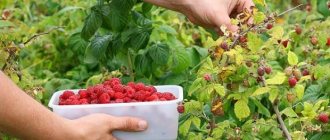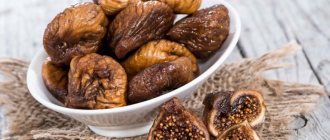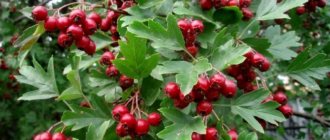Onions are a vitamin-packed and popular vegetable with medicinal properties. The champions in eating hot fruits are the residents of Libya and Senegal. Citizens of these African countries eat more than 30 kg of onions per person per year. In Russia, these indicators are much more modest, but onions in one form or another are grown in almost every garden.
Unfortunately, turnips are difficult to store fresh. Violation of storage conditions leads to rot and damage to the crop. Drying it helps to ensure that the healthy vegetable is preserved. At the same time, the product does not lose its beneficial properties. In this article we will tell you how to dry onions and green onions at home.
Advantages of dry storage
Dried onion seasoning has a number of advantages over fresh vegetables . Here are the main ones:
- it is convenient to store it in winter, since the dried pieces take up little space;
- the product is already cleaned, crushed and ready for use;
- dry slices can be sautéed and stewed;
- dried onions are convenient to take with you, for example, on a hike;
- a properly prepared product retains vitamins, phytoncides and beneficial properties.
Benefits and composition
What are the benefits of dried onions? Like fresh, it strengthens the immune system and helps fight colds, has antihistamine properties and lowers blood pressure. Based on the dry product, tinctures are prepared that have expectorant, diuretic and laxative effects.
The dry product retains minerals : potassium, phosphorus, calcium, sodium, magnesium, vitamins B1, C, A, iodine, essential oils and fiber.
100 g of seasoning contains 8.4 g of protein, 2.8 g of fat, 42.6 g of carbohydrates. Calorie content – 208 kcal/100 g.
Drying methods
There are several ways to dry turnips at home . One of the simplest and most affordable options is to use a conventional oven.
In the oven
Peeled and cut into rings (diced) onions are laid out on baking sheets . It is better to first cover them with parchment, then the pieces will not stick. Heat the oven to a temperature of 50-60°C and place baking sheets with onions in it.
Important! Keep the oven door ajar throughout the drying process.
Depending on the size of the pieces and the amount of product, drying in the oven takes 3-6 hours . The product is periodically stirred and the degree of readiness is checked. When the rings become brittle and crispy, remove the baking sheets and cool.
In an electric dryer
One of the modern household appliances used for preparing dried onions is an electric dryer . The pre-cleaned and crushed product is evenly distributed on baking sheets and dried at 55-65°C for 6-7 hours.
In a convection oven
One of the fastest ways is drying in a convection oven. Onion pieces dry in just an hour. Place the chopped vegetable on baking sheets, set the temperature to 70°C and turn on maximum speed.
Outdoors
You can prepare a healthy and tasty seasoning without using electrical appliances . To do this, chopped and chopped onions are placed on grates and placed in a well-ventilated place.
Need to know. When air-drying, vegetables should not be exposed to direct sunlight.
The product is stirred from time to time to ensure uniform drying . This way the onions dry for about two weeks.
Methods for preparing chopped onions for the winter
To dry the onion quickly and evenly, you need to prepare it - peel it and cut it into rings, half rings, feathers, cubes. The main thing is that the thickness of the plate of the dried product is no more than 5 mm and the sliced particles do not vary too much in size.
Drying in the fresh air
The easiest way to prepare winter preparations. For drying, choose a shaded place with good ventilation.
- The cut pieces are laid out on planks, cardboard, spread cotton cloth, paper without printing ink.
- As the semi-finished product withers and dries, it is necessary to stir it to ensure uniform access of fresh air.
- After approximately 10-14 days, the onions are ready for storage.
A properly dried vegetable has no traces of mold (black spots) and has an elastic consistency.
In an electric dryer
The use of a household electric dryer significantly speeds up the onion drying process compared to the natural process in the open air.
An additional advantage of using this technique is that due to accelerated drying, it is not necessary to chop the vegetable too finely; forced ventilation with heated air will dry the coarsely chopped slices.
- Cut into rings or slices and place loosely on a wire rack.
- The thermostat must be set to a temperature of 55-60 °C.
- During the drying process, the trays are periodically swapped to ensure uniform preparation of the semi-finished product.
- Depending on the source raw material (cutting method, variety, moisture content in the product) and the design of the dryer, onions dry from 5 to 7 hours.
You can place separately chopped onions and green onions on different levels of the dryer - green onions will dry much faster, in 1.5-2 hours.
For the winter in the oven
In a conventional oven (gas or electric stove), drying onions for winter storage is not difficult.
- The baking sheets are covered with paper. You can use any white paper, since drying at a temperature of 50-60 ° C is safe in terms of fire.
- The slices are laid out in an even layer.
- The baking sheets are placed in an already heated cabinet.
- During drying, the oven door should be kept ajar (2-3 cm, insert a spacer).
- As they dry, the slices are periodically stirred and the baking sheets are swapped.
Drying time is from 5 hours.
Drying onions in an air fryer
The fastest and most incredibly productive way is drying using an air fryer: instead of a whole day of drying with regular movements, the process will take only 1 hour. The unit is turned on at maximum speed and the temperature is set to 70 °C.
Green onions (cut feathers) dry 2 times faster - no longer than 30 minutes. It cannot be dried at the same time as chopping onions.
Drying technology
Since drying requires a lot of space, it is convenient to dry turnips in portions of 3-4 kg . Let's talk about the intricacies of the process in more detail.
What is necessary
To prepare a tasty and healthy product, you only need fresh onions , collected from the garden or purchased in a store. There is no need to add any preservatives for preservation.
Onion preparation
Fresh onions are peeled from dry scales and chopped by hand or using a food processor . Cut the vegetable into rings, half rings or cubes. It is worth considering that the larger the pieces, the longer they will dry.
Drying
The prepared product is distributed on baking sheets or racks and, depending on the chosen drying method, placed in a preheated oven, electric dryer or air fryer. Or air dry in a ventilated place.
During the drying process using any of the selected methods, the onions are periodically stirred and checked for readiness. The finished product has a pleasant caramel color, becomes fragile and aromatic.
Take note:
How to pickle red onions
How to make pickled leeks
How to salt green onions for the winter
Preparation and air drying
Dried onions at home will provide all their beneficial properties. Of course, before drying, you need to assemble it correctly. Under no circumstances should you pull the onion by its green tail and knock the onions against each other. This will cause it to become damaged and cause the entire crop to rot. In addition, damaged vegetables will not be stored for long: about 2 months, no more.
The first thing to do is dig up the vegetable. To do this, you need to take a pitchfork or a bayonet shovel. Using a tool, lightly dig up the ground, but so as not to damage the bulbs with the sharp edges. After this, carefully pull out all the fruits, shake off the soil with your hands and place them next to the garden bed.
The next day, the onions need to be carefully sorted and re-examined, and then begin air drying. You can air dry it in 2 ways:
- On the grid. In the first method, the green stem is not needed, so you need to cut it off, leaving a small tip. Selected bulbs should be placed in a nylon net. Then hang the net in a dark, cool place.
- In a braid. For this method you do not need to cut off the green stem. In addition, you will need a rope or cord of the required size. The size of the rope is taken taking into account how many bulbs will be woven into a braid, and its density should be approximately 1-2 centimeters. The rope is folded in half, and the bulbs are placed on it parallel to each other, stems up. Next, green feathers and rope are woven into a tight braid. After which the braid is hung in the same way as the mesh, in a cool and dark place.
In the oven and electric dryer
In addition to air drying onions, there are other ways:
- In the oven.
- In an electric dryer.
Only in this case, the onion is not dried entirely, but cut. The drying process in the oven and electric dryer is the same, only at different temperatures and times. There is one more thing about the electric dryer: it holds twice as many onion rings or herbs to dry as an oven. To do this, the onions need to be peeled and cut into rings of approximately 5 mm.
If onion rings are dried in the oven, then first cut the onion into rings or into medium-sized cubes and lay them out on a baking sheet in a thin layer. The baking sheet should be covered with parchment paper.
Place a baking sheet with onion rings in a preheated oven at 70 degrees for 8 hours. To maintain the temperature, you need to open the oven door slightly. The main thing in drying vegetables is not to leave the oven without checking and monitor the temperature.
In both methods, the onion rings must be laid out so that they do not touch each other. Otherwise, they will stick together and will not give the desired result. Of course, never leave the oven or electric dryer unattended. To prevent the onion from changing color or burning, you can soak it in a saline solution before placing it on a baking sheet. The solution is made as follows: take 50 grams of salt per 1 liter of water. Mix everything well and put the rings there for 5 minutes.
If you don’t have enough time for this, you can speed up the drying process in the oven. To do this, immerse the onion head in boiling water for 5 minutes. Then cut into half rings and place on a baking sheet. Place the baking sheet in the oven, preheated to 70 degrees for 2 hours. Then reduce the temperature to 40 degrees and leave to dry for another 1 hour.
Drying greens
The green stems are often used as a dried herb in prepared dishes. Onion greens can also be dried and used for food. In addition to onions, you can also dry dill and parsley. Thus, the housewife will have her own greenery for any occasion.
To do this, you need to collect the greens, wash them well and cut them into cubes of the desired size. Place on a baking sheet and put in the shade for two days. Place the baking tray in a dark place, protected from dust and rain. You can dry it in your apartment, but it will take a little longer: from 3 to 5 days.
In addition, greens can be dried in the oven using the same method as onions. Just don’t need to soak it in saline solution or boiling water. Drying time in the oven will take at least 5 hours. And in an electric dryer - about 3 hours.
Many housewives place onions near the oven or stove. You can put it near the battery, but not on it. The greens are transferred to a dry container and covered with a tight lid. In this condition it will remain safe and sound.
Top articles: Shelf life of salt from 1 year to infinity, depending on the variety and conditions
Drying green onions
Making green onion relish is another great way to stock up on healthy ingredients throughout the winter. After all, while fresh onions can still be stored for several months, green onions will wither in just a couple of days. You can, of course, freeze it, but after defrosting, the greens no longer look attractive.
Therefore, the best way to stock up on green feathers for the whole winter is to dry them in chopped form . The technology for drying green onions is similar to the technology for drying turnips. Freshly cut feathers are sorted, washed and dried. Then use a sharp knife to cut the feathers into pieces of the desired size.
The greens prepared in this way are dried using the same methods as turnips . At the same time, the product reaches readiness twice as fast. Store dried green feathers in tightly closed containers away from moisture and direct sunlight.
Preparation of dried leeks
Leeks are harvested in the same way as green feathers . The only thing that needs to be taken into account is that the green and white parts of the plant are dried separately from each other, because their drying time is different.
Where and how to properly dry onions after harvesting
After harvesting from the garden, any onion must be thoroughly dried. Drying is an important procedure for preserving the harvest for a long time. The key to long-term storage are 2 factors: air access to each fruit and a dry room. It is important that the harvested onions are well dried, sorted, and rotting parts and raw leaves should be removed.
Sevok
Onion sets must be well prepared for winter, otherwise there is a risk of being left without a harvest next year.
- First of all, the vegetable is well dried in the open air, in the sun for about 10 days.
- The bulbs must be turned over every day so that the sun and air can disinfect them.
- You can dry onions outside or in a well-ventilated, dry area, such as an attic.
- When drying outside, do not forget to cover it with film in the evenings so that the morning dew does not wet the bulbs.
- Next, the onion sets are sorted, the dried tops are cut off, and excess husks are removed.
- Bulbs with rotten scales are removed so as not to infect the rest.
- Store dried onions in boxes or linen bags in dry rooms, first sprinkled with chalk for disinfection.
Onion
- After harvesting, onions are kept in the beds for about 3 days in the sun so that they get rid of moisture and the stuck soil is loosened.
- Next, it is transferred to a ventilated, dry room. Here you can lay the bulbs on a sheet of plywood or cardboard, or braid them and hang them. A suitable place could be an attic, a summer kitchen or a veranda.
- First, the onions are sorted out, rotten heads and excess husks are removed, and feathers are cut off if you do not plan to store them in braids or bunches.
- If the tops are cut off, a tail of 5 cm should be left on the bulbs so that during storage microorganisms do not get inside them and they do not rot during storage.
Onion braids look very nice, hanging in the kitchen or veranda. To make such a useful decoration, you need to use twine. If you weave only from tops, the “braids” will be short-lived and will quickly fall apart, so they must be tied with rope. Onions are stored well in bunches; they are quicker to make than “braids”. Collect about 10 heads and tie them into a strong bundle using twine.
The drying process takes about 2 weeks. The temperature should be +25°C. Every day you should turn the onions over so that they dry on all sides. The onion is ready when the scales are completely dry and rustling.
After this, the heads are sorted again, the bulbs with the neck not dry, rotten, with the husks completely flying off are removed for quick use.
Onions should be stored in cool, dry, ventilated areas. If it is not woven into “braids” or into bundles, then you can use the following container for storage:
- boxes;
- boxes;
- grids;
- baskets;
- nylon stockings.
The main thing is that there is free access of air to each head. You can’t store onions in cold rooms, in the frost, they will simply rot.
Boxes with bulbs should not be placed in the sun; the fruits will lose their valuable properties. In humid rooms, the vegetable will stop crunching and soften. If there is not enough ventilation, insects will appear.
Signs of readiness
Depending on the drying temperature, the finished product turns out different . If you dry at low temperatures (up to 50°C), then the output will be simply a dried vegetable of a light color, without a pronounced odor.
If you set the temperature to 65-70°C, the sugars contained in the vegetable will caramelize and the seasoning will acquire a sweetish, concentrated taste and a pronounced aroma of fried onions. Pieces of this vegetable take on a caramel color and break when pressed.
Terms and conditions of storage
Any dried product is characterized by an increased ability to absorb moisture , and onions are no exception. High humidity in the storage area causes the development of rot and mold; such a product can no longer be eaten.
Attention! Large volumes of dried onions - more than 1 kg - are stored in a cool, ventilated place, such as a basement or cellar. Humidity in the room should be moderate, no more than 70%.
Vegetables dried for winter storage, chopped onion or green, are stored in plastic or glass containers with lids. Cardboard boxes and paper bags are also used as packaging. It is preferable to use small containers.
The packaged product is placed in a cool, dry place out of direct sunlight . For daily use, it is convenient to pour the seasoning into jars with a tight-fitting lid. Small volumes are well stored in the kitchen (in a closet or bedside table).
Advice. Place a fabric bag with rice in the container with the dry product - it absorbs moisture well.
Whole pieces of dried onion, if stored properly, are suitable for use for two years . But in ground form, the seasoning quickly fizzles out and loses its taste. For this reason, it is advisable to grind onions in small quantities before use.
Preparing the feather for drying
Onion greens should be cut in the late morning or early evening during the period of greatest “blooming”, when the feather is not too young, but not overgrown - juicy, elastic, bright green. For harvesting, they usually use onions, specially planted “on the feather”, or a trumpet, without cutting, but by pulling out the entire shoot. Leaves of perennial species, such as mucus, are collected selectively.
The white part, including leeks, also dries well, but takes longer, so it is folded and dried separately from the green mass.
When harvesting, you need to take into account that the yield of a dried feather will be equal to approximately 1/5 of the weight of a raw one. Dry, wrinkled, damaged leaves with signs of disease are discarded. If necessary, rinse the greens under running water and dry on cloth (paper) towels. For slicing, use a sharp knife, preferably a ceramic one, to prevent oxidation and excessive release of juice. The size of the pieces is not of fundamental importance, although it is faster and more convenient to work with larger ones. Some cooks prefer to dry whole feathers.

